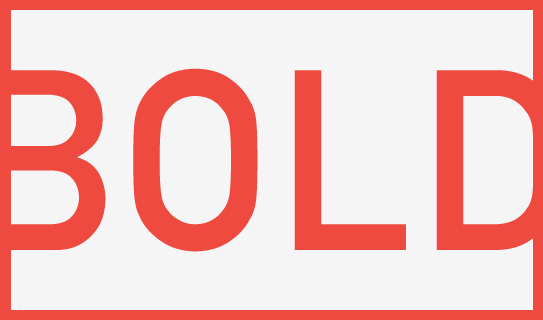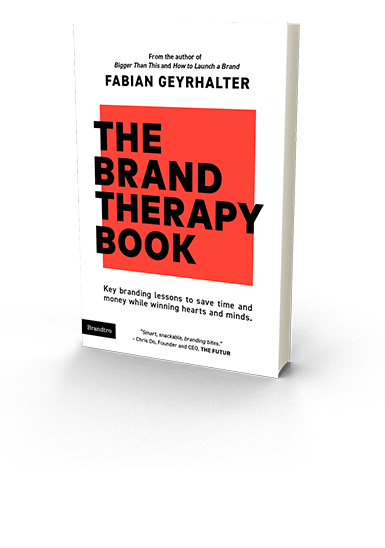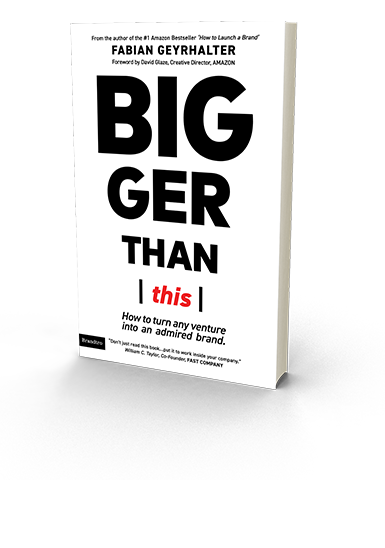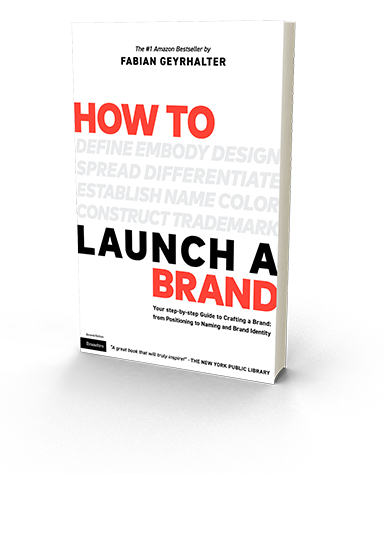Tag Archives: B2C
How to Build Your Retail Brand on a 4-Letter Word Only You Can Own
I recently had a brand consultation call (via Clarity) with a fashion accessory startup from Singapore working on a convincing new product that perfectly fits into a niche yet also has the opportunity to take over it completely.
If they ever get that far.
The startup needs to go head-to-head with the largest players in the space in order to succeed; a space where big brand names are key to morphing indecisive shoppers into on-the-spot buyers. I saw their value proposition after talking with them for ten minutes, but how will they ensure to get noticed in split seconds? Are consumers willing to pay the same for a new no-name brand as they would for the time-tested brand names one wants to be seen sporting? Heading towards major competition, I had one advice for her going into a saturated B2C/Retail market:

Be BOLD
The big players can be sexy, smooth, sophisticated, glamorous, heck…they can be anything money can buy. Bigger displays, more massive campaigns, bigger celebrity endorsements, stupendous photo shoots. There’s one thing only you can, and they can’t: You can be BOLD.
It is a 4-letter word, and you can own many more of those if you’d like – and not in the fabricated manner FCUK did. Words others can only hesitantly type, you can actually be. They may go bold on a marketing campaign, but your brand can launch being bold – with an immense amount of attitude and moxie. You can shout. You can be loud. It might be the only way you’ll get noticed.
Look at your product and examine your competitors. Analyze the single most important and unique attribute describing your brand; an attribute you can own in your segment. Is it empowering, motivating, strengthening, enriching? Then look at what outrageous thing you could do to make your audience love you, that is based on this single attribute.
T-Mobile, who you’d think of as being far removed from being a startup, had to switch gears in recent years and started looking at themselves as a rebellious startup in order to survive, and thrive. And boy did they go bold and are crushing it today. Re-establishing themselves as the ‘Un-carrier,’ T-Mobile is throwing around the words free, included and unlimited just as much as Rebel-CEO John Legere says ‘those fuckers,’ describing the other big players in the field. Those players are the ones that are now falling behind. A short story about a large corporation trying to be as bold as a startup. So, what stops you as a startup from going bold?
Surpass FEAR
Fear is the only reason why most startup founders don’t take the most rewarding risk of their lifetime. You are scared to fail. You are afraid to use crazy names (yes, unpronounceable products), make everyone who buys a first edition a shareholder, give away your product for free, launch it double the price of your biggest competitor, and on goes the list of outrageousness to chose from. But you are scared to take (hold on, bonus 4-letter word magic coming up) risk.
Gain LOVE
Take a step back and analyze your situation: Only you can do it because you have very little to lose by going all-in, full-on bold. All you can gain is customers that not only like your stuff, but love it. They will build a small army of early brand ambassadors for you. For free. That is, in return of you going totally bold and having no fear. Modern consumers ache for brands like that, we all do.
When you analyze your competition, look at what bold steps they have taken lately that are not shallow campaigns, but actually built on true brand beliefs. You may notice that this is a weakness your startup can turn into its key strength. But first: Drop that fear.
The Importance of Branding At Time of Launch For Tech Startup, B2C/Retail And B2B Company Founders
‘Is branding the key for a successful start-up?‘ is the topic for a speech I was asked to give at Internet Hungary this week. I could make it a 5 second speech and say ‘Yes, it is one of the most important factors,’ but lucky for me the topic is broader and will go deeper into the keys of creating a successful brand. Let me use this opportunity though to dive knee deep into this question as some brand elements are more important to certain types of companies at time of launch than to others:
No one shall skip the Brand Platform creation at the onset of a new venture, unless you want to compete on price, be boring and unattractive to work for, and are not keen on acquiring the right target audience at time of launch. You tackle the Brand Platform right after you draft your business plan (from fully fleshed out to napkin version – all are acceptable forms of business plans at this stage, depending on your own comfort level).

Launching with a meaningful and unique Name and Brand Identity Design seems like a no-brainer, a must for all entrepreneurs. If for whatever logical reason (budget not being part of that logic) you feel forced to launch with a sub-par name and logo, knowing you will have to go through a (more costly) re-naming and re-branding exercise upon showing first successes, it is the easiest to do for a tech startup or B2B venture that requires solely test users or relies on a very small niche audience, which will make it easier to educate them on this big and disruptive brand change down the road. Some Tech Startups (especially apps) are prototyping until the day of launch, making it an easy excuse to skip this essential step, whereas it is much more advisable to work on a prototype whilst formulating the brand platform, that way you are educating yourself about the target audience while you see them use the actual product, enabling you to create a meaningful brand that will not have to be rebuild soon thereafter. A win – win.
Needs for Brand Atmosphere Touch Points vary in importance and specifics from company to company with retail and other mainly offline B2C companies leading the list, E-Commerce and Tech Startups surviving off some basic, consistent touch points bundled with heavy E-Marketing template creations, while most B2B brands fall anywhere in-between, depending on their structure and audience. If bootstrap is your motto, these can be rolled out over time, making it essentially more pricey, but allowing you to spread the cost.
It only makes sense that ventures leading with digital need to make UI/UX Design part of their strategic brand implementation. Most companies – B2C/Retail and B2B – rely heavily on brand-centric (responsive) web sites to attract and convert leads of different types. For Online Retailers and Tech Startups where the web site also is the product, the prototyping should be addressed in parallel with the Brand Platform creation as it will educate the branding process as a whole. Some companies are able to save on development costs using existing WordPress templates (and such), but brand will still be key at launch.
To conclude, whenever a startup founder tells me (and they tell me all the time) “I can not afford branding at this early stage of my company formation” I reply with “No, you cannot afford not to brand at this early stage of your company formation. Unless you think a strong brand is worth less at time of sale or IPO than an ugly yet functional prototype.‘ This often marks the end of our conversation, until they call a few weeks later to get started with branding their new venture.



